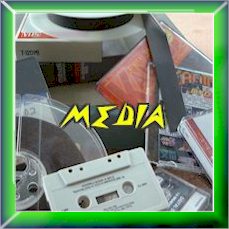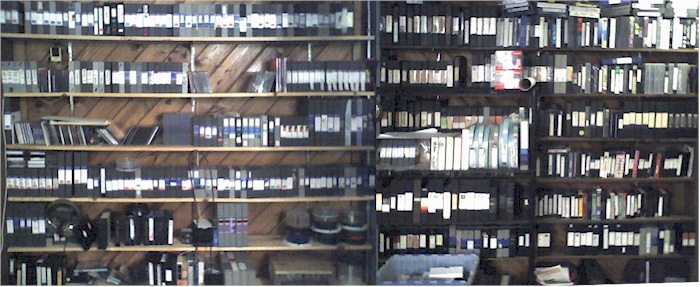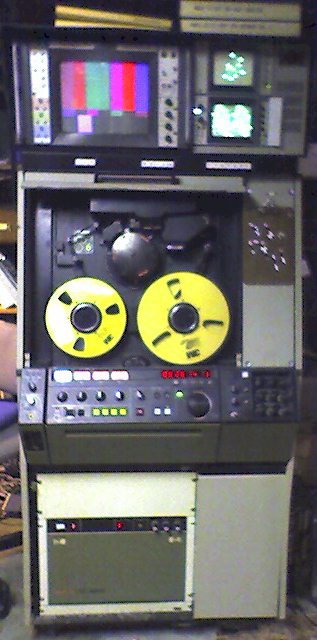
|
I have always been a media junkie. It started with books. Then LPs, then reel-to-reel audio tape, then audio cassettes. Then I began shooting 8mm movies and the world of images exploded into my consciousness! Soon there was videotape, in 1/2", then 3/4" then 2" quad, then 1"C, then all the digital formats... And that doesn't even count the DATA tapes! Oh, and Disks! Don't forget 8" floppy disks! Then 5 1/4" then 3.5" ... low then hi density, and of course Mac and PC format.... How about Flopticals? And CD's and DVD's.... And it just seems to go on and on.... |

This is just part of my media library.
And this is another part!..........................................and another part! But guess what? It hardly takes any time before these formats become obsolete! What happens when you can't read them anymore? Think how terrible it would be if the words started disappearing from the pages of books in libraries after just a few short years! Thats essentially whats happening to much of our media today! |

|
So... In an effort to preserve my media, and to help others rescue their valuable material, I have tried to keep together as much as I can of the equipment it takes to read/play these media items! Here is my latest example:
It all started when I needed to copy a 1"C broadcast videotape a friend of mine sent me to use in the Dream Machine documentary. I called everywhere and was amazed that none of the TV stations or production houses in the area still had any working 1"C video machines. I tracked down two Hitachi HR-210 machines (non-working, of course) at WKPT-TV. I told my friend George DeVault, the station manager, that I could probably get one working using the other for spare parts. Next thing I know I was hauling both of them home. All I had to agree to do was dub a few of their old 1" spot reels to Betacam IF I could get one working. I used to work on Sony and Ampex machines in Hollywood, but it wasn't much of a stretch to apply that knowledge to getting a working machine. Most of the work involved trouble-shooting the Time Base Corrector at the bottom. Then even more work went into getting the picture and waveform monitors to function! |
